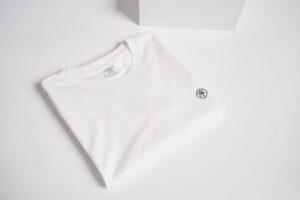It’s time to add midi dresses to your collection if you’re looking to update your style and don’t currently have any in your closet. How about a midi dress, though?
To suit your taste and body shape, midi dresses come in a wide range of styles and alternatives. Furthermore, they are adorable to wear all year round because they are easily dressed up using cardigans as well as boots or gently dressed down using an informal pair of sandals.
Any form of dress that extends above your ankles but reaches the mid-calf is referred to as a midi dress. You may select from a variety of designs and styles to suit your body type and sense of style.

Table of Contents
The two are not equivalent; a maxi and a midi
A maxi garment goes all the way to your ankle, or even the tops of your feet. The major difference between a midi and maxi is the midi is, at longest, only going to hit the middle of your calf. As we’re talking midi dresses here, there are thousands of options and variations that are flattering, fashionable, and fantastic. Midi dresses are perfect for dressing in every season because they are available in a wide range of materials and designs. They may be dressed up by donning jackets and accessories, or they can be worn by themselves with only a dressy set of heels.
Background on the Midi Dress
It’s pretty interesting to learn about the midi dress’s history. Since the midi dress was just a garment that was above your ankles, the concept has been established for ages.
1900s
Everyone wore ankle-length dresses before the turn of the 20th century. Everyone bought longer clothing since it was considered improper to wear clothing that exposed your ankles. If you donned a midi dress, it was considered that you were impoverished or in the lower socioeconomic strata.
1910’s and 1920’s
But beginning in the early 1910s and 1920s, hemlines started to shorten, and shorter dresses started to be worn by the majority of women. The flapper dress didn’t make its appearance until 1927, so gowns that reached the knees were a common sight. Click here to read more on flappers and their style.
A younger group of women wearing dresses which were known as flappers was viewed as a group of rebels in their day. By enjoying jazz music, cutting their hair short, and donning knee-length skirts, they defied the societal expectations placed on women of their time.
The flapper craze of the 1940s wasn’t permanent. Midi dresses have returned to being a preferred standard hemline for dresses by the early 1940s. The idea behind midi dresses was to express femininity and refinement without showing too much flesh.
1960’s
The biggest shift in dresses occurred in the 1960s whenever women strove to alter their wardrobes and refused to follow trends or designs that were prescribed to them. Women started donning a broad range of dresses, such as mini, midi, even maxi dresses. From that point on, midi dresses came and went from the fashion world, returning often in the spring and early fall.
Keep in mind, there are many styles of midi dresses, even today. Here are a couple of the most well-liked midi dress types out of the many that exist. However, remember that the key to a great midi dress is how you feel in it. Choose what works best for your body type, not what’s trending.
- Midi Bodycon Dress
A bodycon midi frock is a shorter dress that is tighter. It adheres to your body, emphasizing your natural curves in key places like your tummy, waist, and booty.
- Midi Bardot Dress
Off-the-shoulder elegant attire is what a bardot midi dress offers. Weddings and the spring and summer seasons are ideal times to wear bardot midi dresses.
- Sleeved and Sleeveless Midi Dresses
Midi dresses with long sleeves offer warmth and protection throughout the cooler seasons. They have a sophisticated appearance and highlight your curves without being as constricting as a bodycon dress. When spring comes, the sleeveless midi will help you keep your cool while looking completely put together.
- Mini Wrap Dress
A midi wrapped dress features a tie at the waist that often rests on your hip. You may choose how tightly you want the waist of a midi wrap dress to be covered. Many different body shapes can pull off this style.
Choosing a Midi Dress
It’s critical to find a midi dress that suits your own style and is simple to style whether you’re looking for or purchasing one. Here are some pointers to keep in mind while you look for midi dresses.
- Think about the Length
The center of your calves, which is often the biggest portion of your leg, should not be where you end your hemline on a dress. It can make you appear boxy and make the dress appear longer than it actually is.
You should measure the length on your legs to ensure that you are purchasing the appropriate length. A few inches before the ankle or just a few centimeters below the knee are the best locations. Choose the right hemline (https://www.sewing.org/files/guidelines/3_110_pattern_markings_part1.pdf#:~:text=Pattern%20Adjustment%20Lines%3A%20Two%20parallel) because it will determine the overall look and feel of your dress.
- Display Your Waist
If you wear a garment incorrectly, you risk hiding your curves and compromising how effectively your form is displayed. Belts are frequently worn with midi dresses because they complete the ensemble and highlight your waistline.
This may not be essential if you’re purchasing a bodycon dress because your contours will already be visible through the garment. However, you may add a broad belt onto a bodycon dress if you want to further accentuate your curves.
- The long view
Only buy items you know you will try to restyle and wear again because they can be dressed in numerous manners, such as incorporating jewelry or pairing it with a jacket. Make sure this is something you’ll like wearing repeatedly. Avoid purchasing something you don’t adore.




